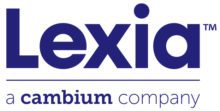Using an Asset-Based Approach to Honor All Learners
Watch the RecordingListen to the Podcast
Teachers face many challenges in the classroom, with one of the biggest being how to work with students with IEPs and disabilities. During the edLeader Panel “Honoring All Learners: An Asset-Based Approach,” experts discussed classroom inclusion, asset-based perspectives, and helping students thrive.
The panelists started by sharing their experiences with inclusion. Barbara Pape, Senior Director of the Learner Variability Project at Digital Promise, talked about addressing student strengths in asset-based teaching.
She also discussed having two children with dyslexia and how they were or were not made comfortable in the classroom, depending on their teachers, explaining that this made her a proponent of learner variability. She expressed that teachers need to better understand who students are and what they need.
Dr. Michael Maclin, Executive Director of Diversity, Equity, Inclusion, and Accessibility for the Special School District of St. Louis County (MO), discussed how systems can oppress people and need to change. He pointed out that there is a lack of inclusion in the classroom when students with disabilities are pulled out.
The best teachers are in classrooms, so when that happens, students are placed at a disadvantage. Kerri Larkin, Senior Education Advisor for Lexia Learning, added that the system was created by people who succeeded in general education settings, instead of people from special education settings.
Sharing his experiences with inclusion, David Flink, Co-Founder and Chief Empowerment Officer of Eye to Eye, was a student with ADHD and dyslexia in the 1980s. One teacher moved him into the hallway for being distracting, which sent him a message that he didn’t belong.
Another teacher gave the class different options for sitting in class, which helped him focus and showed students that there are different ways to learn. Later on, during his education equity fellowship, Flink had to read a lot with his eyes, rather than with his ears. Being someone who reads best with his ears, this was not inclusive.
Next, the group talked about good inclusion. Pape explained that it comes from understanding learner variability. When that’s understood, teachers see students as having different mindsets, not as problems. It also addresses students’ needs.
Maclin stated that students need to see themselves in the curriculum, or they’re excluded, and Flink said that teachers are given little to prepare them for inclusion. He pointed out that being a white, cisgender male from a good background contributed significantly to his success.
Pape added that teachers don’t have the resources to work with learner variability. Her son was able to advocate for himself due to being a privileged white male. The educational system needs to be based on needs—students shouldn’t have to advocate for themselves.
Terminology is also important. Maclin talked about first-person language, where we identify the person first. He explained this by using the example “people with disabilities” instead of “disabled people,” putting the focus on the person, not their disabilities. Young people need to be listened to in order to build an inclusive society. We need to ask people about their needs—there’s no one way to be inclusive.
To promote asset-based approaches for all learners, teachers need to understand that students’ differences are strengths. The system was made for certain students, but we need to see there are ways to help everyone. We must normalize students’ differences.
Students need voices in classrooms and chances to interact. With this, the panelists stated the importance of using privilege to be good allies. People need to use their privileges to empathize with and advocate for each other.
Empathy, the panelists emphasized, is the key to all of this. Putting ourselves in others’ shoes is the key to helping students be the best they can be. Listen to students, understand their needs, and remember that they’re people. That is how teachers can help.
Learn more about this edWeb broadcast, Honoring All Learners: An Asset-Based Approach, sponsored by Lexia Learning.
Watch the RecordingListen to the Podcast
Join the Community
Diversity, Equity, and Inclusion is a free professional learning community for educators to collaborate around creating equitable learning environments in schools and districts, and for remote learning.
Lexia®, a Cambium Learning Group company, is the Structured Literacy expert. For nearly 40 years, the company has focused solely on literacy, and today provides science of reading-based solutions for both students and educators. With robust offerings for differentiated instruction, personalized learning, assessment, and professional learning, Lexia helps more learners read, write, and speak with confidence. For more information, visit www.lexialearning.com.
Article by Jon Scanlon, based on this edLeader Panel






Comments are closed.